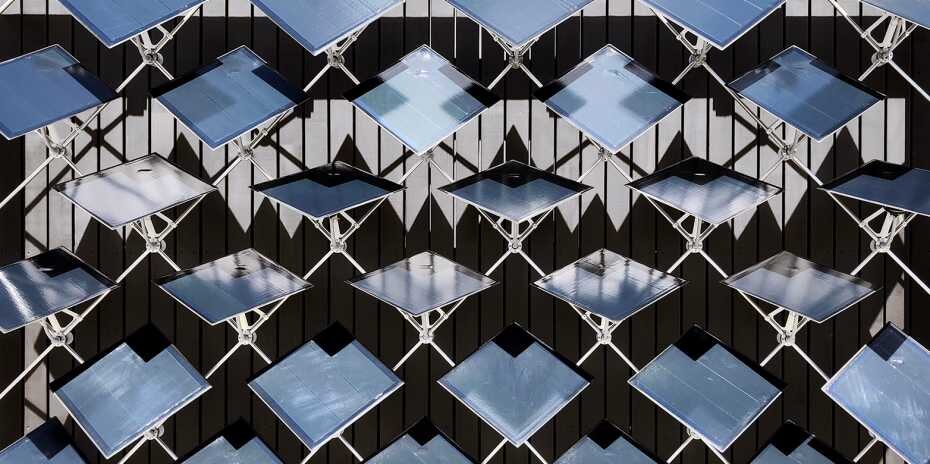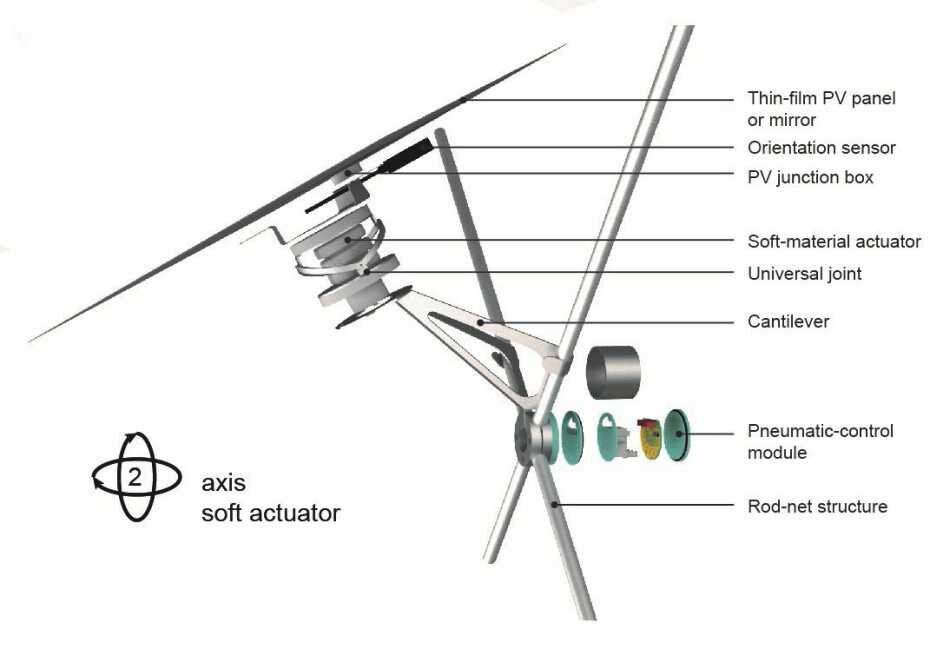TECH

Energizing buildings
The solar façade developed at ETH Zurich combines electricity production with intelligent shading to achieve optimal energy balance.
Heating or cooling internal spaces requires energy. More intelligent building façades could save much of that energy. A system developed at ETH Zurich uses solar panels to generate electricity while at the same time allowing the right amount of sunshine or shade to suit weather conditions and internal use.
Positive energy balance
Arno Schlüter, Professor of Architecture and Building Systems, and his research group have developed an adaptive solar façade system that regulates individual rooms such that they produce more energy than they consume over the course of the year. They have just reported their findings in a recent issue of the journal Nature Energy.
The innovative façade comprises arrays of movable solar panels mounted on a network of lightweight steel cables. These are individually controlled and moved vertically and horizontally by a soft robotic element. These soft robotic actuators are the heart of the system: the combination of soft materials that change their shape under pressure and a rigid U-shaped joint allow them to lock into place to withstand harsh weather — even storms.
Researchers have tested the system's weather endurance and performed measurements with several prototypes on the Hönggerberg Campus. They found that the movable solar panels harvest around 50 percent more energy on a clear summer's day than static solar panels mounted on a building facade.
Savings potential simulated
However, the façade not only generates electricity, but can also regulate how much light and heat permeate the building envelope, thus regulating the internal climate. An adaptive learning algorithm controls the movement of the panels so that the savings made in heating and cooling internal spaces lowers the net energy demand. At the same time, the algorithm also takes into consideration how the building's current use and adjusts the climate accordingly.
To determine the degree to which a room's energy consumption could be theoretically reduced, the researchers simulated several scenarios using data from prototypes. They calculated the energy-saving potential of building envelopes fitted with movable solar façades in Cairo, Zurich and Helsinki. In doing so they ran simulations for spaces in both office and residential use.
Biggest potential in temperate zones
The results show that energy savings tend to be higher in offices than in living spaces, in warm rather than in cold climates, and above all in temperate zones such as Central Europe. Arno Schlüter sums up the findings: "The more variable the ambient conditions, the greater the benefits of the adaptive façade."

The best energy balance was seen in the simulations for office space in a temperate zone (in this case Zurich) in buildings built to the latest standard. In this scenario, where both interior heating and cooling were required over the course of the year, the adaptive façade generated 115 percent of the energy required for a comfortable room environment.
An equally good result came from the simulation for an office space in a house in Cairo built before 1920, which required much more shade and cooling. In this case, the façade produced 114 percent of the total annual energy requirement. In other words, the study highlights the potential energy savings for both new and old buildings, but the façade must always be considered in conjunction with the interior space and its use.
"We would like to solve the trade-off between user comfort and energy efficiency in buildings," Arno Schlüter says. "In theory, the most energy-efficient space would have in windows. We are therefore glad to demonstrate how an intelligent interface between the interior and exterior of a building can provide optimal user comfort and also generate excess energy."
Professor Schlüter's group will soon be able to measure the impact of the adaptive solar façade on a physical building: the system is part of the futuristic "HiLo" unit currently being built on the topmost platform of the NEST research building in Dübendorf.
Michael Walther, ETH Zurich

No comments:
Post a Comment